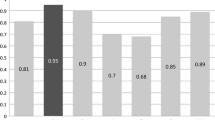Abstract
Recently, a new oral liver-specific manganese-based MR agent (CMC-001) has been introduced. This contrast medium is delivered to the liver in high concentrations in the portal vein and very low doses in the hepatic artery, as only small amounts of manganese enter the general circulation. It is taken up by the hepatocytes and excreted in the bile. Our initial experience with the new MR contrast medium in a variety of patients is reported. A total of 20 patients (11 males and 9 females) were studied with MR imaging 2 h after oral ingestion of the contrast agent. Sixteen patients were referred for evaluation of focal liver lesion(s), whereas in the remaining four patients, evaluation of the biliary tract was requested. In the 17 patients without biliary obstruction, there was an increased signal intensity of the liver parenchyma, whereas in the three patients with biliary obstruction, the uptake was delayed. There was excellent visualization of the biliary system on the T1-weighted images in the 16 patients without biliary obstruction referred for evaluation of a focal liver lesion. In seven patients, the uptake was patchy. In patients with focal liver lesions or biliary tract diseases, it is possible to increase the signal intensity of the liver parenchyma after the oral intake of CMC-001. In patients without biliary tract obstruction, the biliary system is easily visualized. Oral manganese seems to be useful in hepatobiliary MRI. Further research is strongly warranted.




Similar content being viewed by others
References
Bellin M-F (2006) Safety of MR liver specific agents. In: Thomsen HS (ed) Safety issues and ESUR guidelines. Heidelberg, Springer Verlag pp 121–128
Bartolozzi C, Donati F, Cioni D, Crocetti L, Lencioni R (2000) MnDPDP-enhanced MRI vs. dual phase spiral CT in the detection of hepatocellular carcinoma in cirrhosis. Eur Radiol 10:1697–1702
Thomsen HS, Loegager V, Noergaard H, Chabanova E, Moller JM, Sonne J (2004) Oral manganese for liver imaging at three different field strengths. Acad Radiol 2004 11:630–636
Chabanova E, Thomsen HS, Loegager V et al (2004) Effect of new manganese contrast agent on tissue intensities: comparison of 0.23 T, 0.6T and 1.5 T MRI. A part of a phase I trial. MAGMA 17:28–35
Semelka RC, Helmberger TKG (2001) Contrast agents for MR imaging of the liver. Radiology 218:27–38
Thomsen HS, Svendsen O, Klastrup S (2004) Increased manganese concentration in the liver after oral intake. Acad Radiol 11:38–44
Mena I (1981) Manganese. In: Bronner F, Coburn JW (eds.) Disorders on mineral metabolism. Academic Press, New York pp 233–270
Underwood EJ (1971). Manganese. In: Underwood EJ (ed). Trace elements in human and animal nutrition. Academic Press, New York pp 177–207
Keen CL, Lönnerdal B, Hurley LS (1984) Manganese. In: Frieden J (ed) Biochemistry of the essential ultra-trace elements. Plenum Press, New York pp 89–132
Korc M (1988) Manganese homeostasis in humans and its role in disease states. In: Korc M (ed) Essential and toxic trace elements in human health and disease. Alan R. Liss, New York pp 253–273
Marti-Bonmati L, Fog AF, Op de Beeck B et al (2003) Safety and efficacy of mangafodipir trisodium in patients with liver lesions and cirrhosis. Eur Radiol 13:1685–1692
Fore H, Morton RA (1952) Manganese in rabbit tissue. Biochem J 51:600
Tipton IH, Cook MJ (1963) Trace elements in human tissue. II. Adult subjects from the United States. Health Phys 9:103
Sahani DV, Kalva SP, Fischman AJ et al (2005) Detection of metastases from andenocarcinoma of the colon and pancreas: Comparison of mangadipir trisodium-enhanced liver MRI and whole-body FDG PET. Am J Roentgenol 185:239–246
Fayad LM, Kamel IR, Mitchell DG, Bluemke DA (2005) Functional MR cholangiography: Diagnosis of functional abnormalities of the gall bladder and biliary tree. Am J Roentgenol 184:1563–1571
Hottat N, Winant C, Metens T, Bourgeois N, Devière J, Matos C (2005) MR cholangiography with manganese dipyridoxyl diphosphate in the evaluation of biliary-enteric anastomoses : Preliminary experience. Am J Roentgenol 184:1556–1562
Acknowledgement
The authors are thankful to Copenhagen-Malmö-Contrast (CMC) for providing the contrast agent CMC-001.
Author information
Authors and Affiliations
Corresponding author
Additional information
Financial disclosure: Thomsen HS. Manganese-containing magnetic resonance contrast agent. US patent no. 6,015,545/ 18 January 2000.
Rights and permissions
About this article
Cite this article
Thomsen, H.S., Barentsz, J.O., Burcharth, F. et al. Initial clinical experience with oral manganese (CMC-001) for liver MR imaging. Eur Radiol 17, 273–278 (2007). https://doi.org/10.1007/s00330-006-0336-9
Received:
Revised:
Accepted:
Published:
Issue Date:
DOI: https://doi.org/10.1007/s00330-006-0336-9




